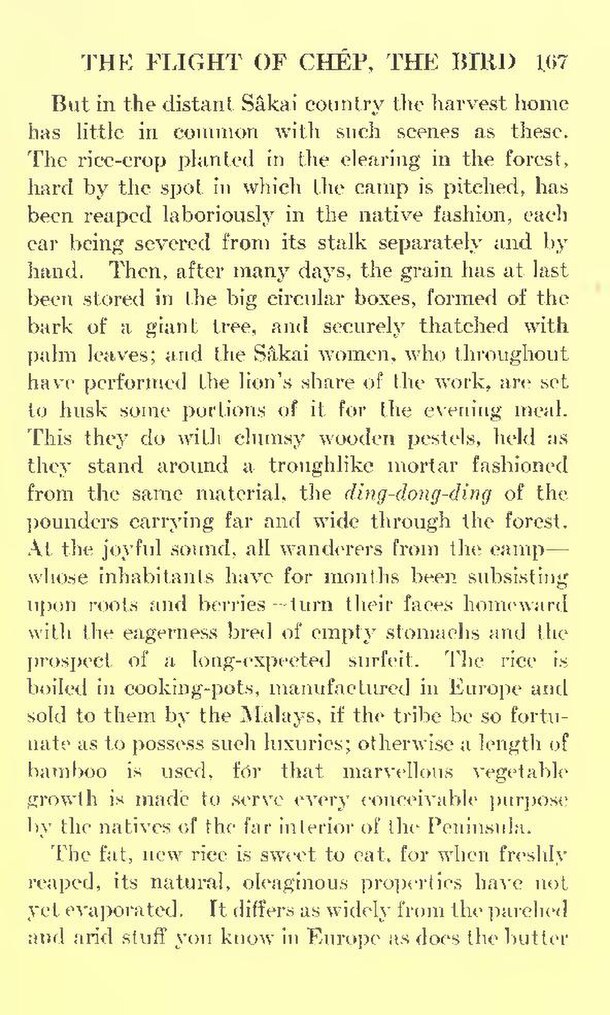But in the distant Sâkai country the harvest home has little in common with such scenes as these. The rice-crop planted in the clearing in the forest, hard by the spot in which the camp is pitched, has been reaped laboriously in the native fashion, each car being severed from its stalk separately and by hand. Then, after many days, the grain has at last been stored in the big circular boxes, formed of the bark of a giant tree, and securely thatched with palm leaves; and the Sakai women, who throughout have performed the lion's share of the work, are set to husk some portions of it for the evening meal. This they do with clumsy wooden pestels, held as they stand around a troughlike mortar fashioned from the same material, the ding-dong-ding of the pounders carrying far and wide through the forest. At the joyful sound, all wanderers from the eamp- whose inhabitants have for months been subsisting upon roots and berries -turn their faces homeward with the eagerness bred of empty stomachs and the prospect of a long-expected surfeit. The rice is boiled in cooking-pots, manufactured in Europe and sold to them by the Malays, if the tribe be so fortu- nate as to possess such luxuries; otherwise a length of bamboo is used, for that marvellous vegetable growth is made to serve every conceivable purpose by the natives of the far interior of the Peninsula.
The fat, new rice is sweet to eat, for when freshly reaped, its natural, oleaginous properties have not yet evaporated. It differs as widely from the parched and arid stuff you know in Europe as does the butter
